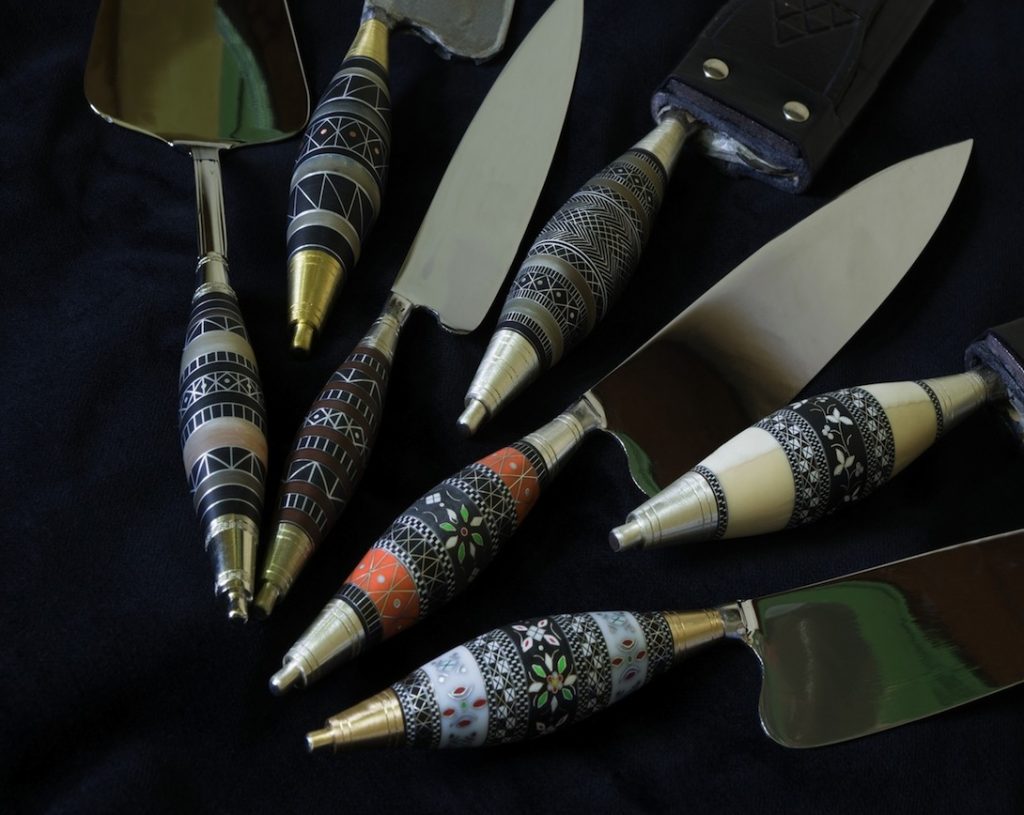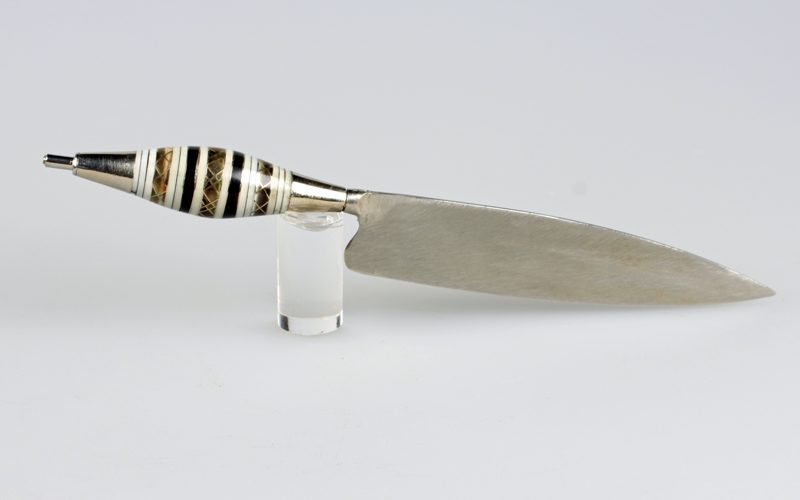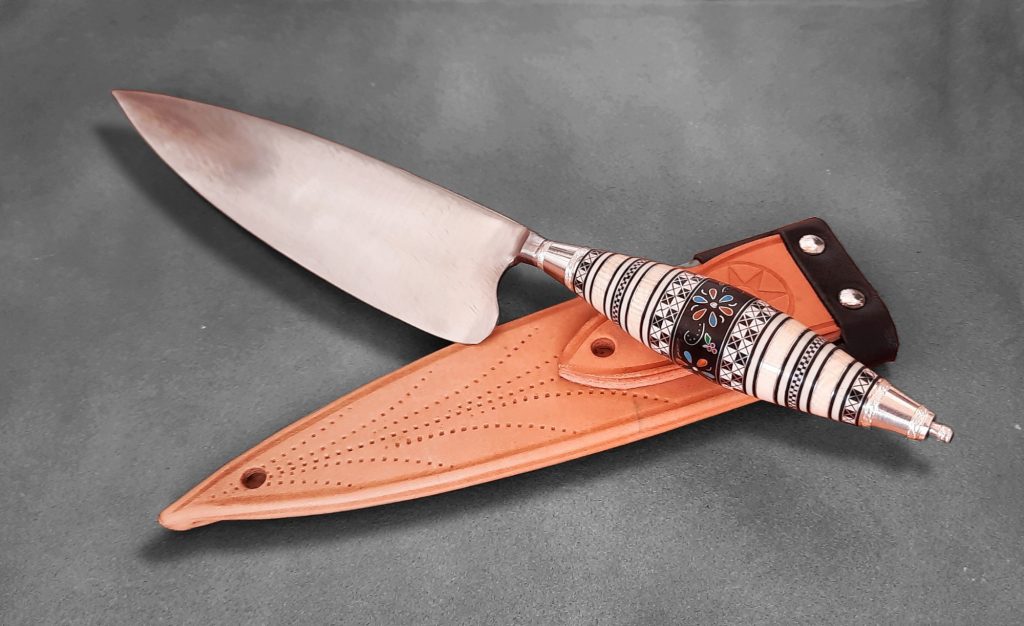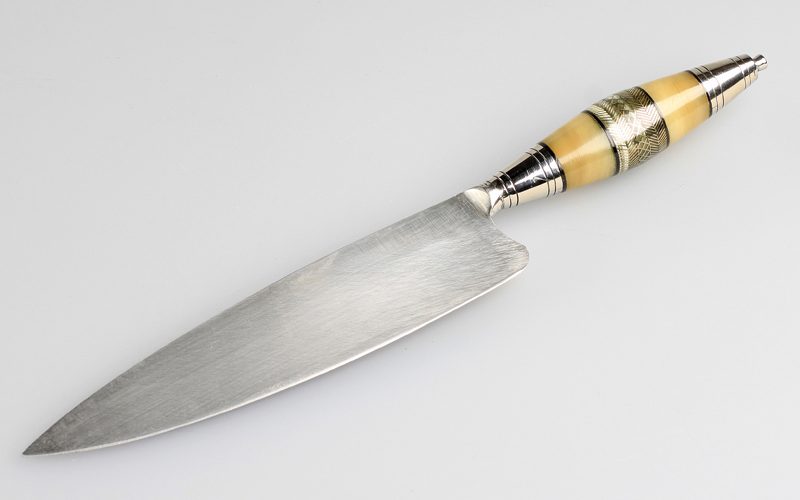The naife is, without a doubt, the star product of Canarian craftsmanship. For centuries, this knife has been a basic tool for the Canarian farmer and stockbreeder. Nowadays, it has become a valued decorative element from which exquisite pieces are made , coveted by the best collectors in the world.
History of this work of craftsmanship
Much has been said about the history and origins of the Canarian knife, but little has been studied and written. The most widely accepted theory is that the naife is a knife of Albacete origin, modified by local craftsmen to meet the needs and tastes of the Canary Islanders who worked the land and, in particular, the banana plantations.

Its name clearly derives from the word used in English to refer to knife, "knife", the Canarian naife would only have the English name. This is because he has not found any piece of the British knife industry that can be related to the unique morphology of the Canarian knife.
Other theories relate the Canarian knife to the Berber culture and the Guanches or aboriginal Canary Islanders. Some specialists claimed that the Canarian knife came from North Africa, but this theory has been losing weight in recent years.

The master knife-makers of the 21st century keep alive an ancestral tradition that has adapted to the new times without losing its value and cultural roots. The workshop, the materials and the tools have hardly changed, but the final product is used more as a decorative element, either in the form of letter openers or miniatures, than as a farming tool.
The naife: how this handicraft is made
Thenaife or canary knife is composed of three distinct parts. A large blade, with a pointed end but with a rounded and wide shape at the opposite end, which extends into a piece called a tang, which is where the handle is embedded in a round section, which is called a cape.

Knives made for field work use tempered steel blades, while purely decorative knives use silver or nickel silver blades.
The materials for its production
The materials used for the handles are ram, goat and cow horn, ebony, ivory and metals such as silver, steel or alpaca. The chosen material is prepared in circular rings with different diameters that are then joined together to give the handle its characteristic round shape.
Purely decorative incisions and inlays are made on these rings to form the vegetal, checkered or geometric figures chosen by the artisan.
The elaboration of naife
The production of the naife is divided into two parts, on the one hand, the manufacture of the blade, and on the other hand, the manufacture of the handle. With the exception of some master knifemakers who make the complete knife in their workshop, the blade is generally made by the blacksmiths while the knifemakers are exclusively dedicated to the handle.

The process of elaboration and ornamentation of the cape is very complex, since it is necessary to prepare circular pieces of different diameters to give it its characteristic circular shape, assemble the metal washers that unite them and make the curious inlays that make each Canarian handmade knife unique.
If you want to know more about the instruments and crafts of the Canary Islands, here are some links that may be of interest to you: The legacy of traditional Canarian ceramics; Timple, know the history of the Canarian instrument; The Canarian fretwork, insignia of the island craftsmanship.
Paula Vera
Photos: antiguedadesnecochea.wordpress.com; artenerife.com



